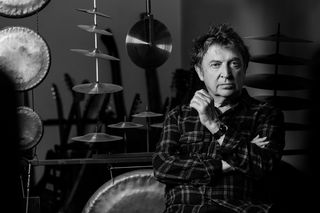Synesthesia
Andy Summers, Synesthete?
The legendary guitarist of The Police has created a multisensory show.
Posted June 13, 2019

Virtuoso musician Andy Summers has long been fascinated with the multisensory, even releasing an album in 1995 named, "Synaesthesia," (British spelling). His profound interest began with a particularly transcendent LSD trip early in his career in London with clear white light and the sense he was in the presence of the divine. He told me by phone this week: "It changed my life."
"I came out of that period and of course I took acid several times and mushrooms. I experienced music as color and shapes and all kinds of trippy things," he said. The visuals from psychedelics do have things in common with true synesthesia.
And then there were the oil slides with all the colorful shapes and colors he used to enjoy as part of the stagecraft with one of his earlier bands. I ask him the obvious: Does he experience color for sound neurologically? (Many successful musicians do, from Pharrell Williams to Lady Gaga, Billy Joel, Itzhak Perlman, Lorde, Halsey, etc.) And he says he doesn't—he doesn't identify as a synesthete, per se.
But not all synesthesia is color. And his profound creativity—think of his distinctive guitar stylings on everything from "Synchronicity II" to "Walking on the Moon," which sounded like no one else at the time when he burst on the scene and have influenced several generations since—made me think there was more to it. Could it be he experiences some forms of the more than 80 varieties himself?
I probed deeper and found that Summers has spatial sequence and mirror-touch synesthesia. The spatial sequence gift is defined by the National Institutes of Health (NIH) as having to do with "ordinal sequences such as months, numbers or the letters of the alphabet are perceived to occupy spatial locations in the mind's eye or peripersonal or extrapersonal space." Summers tells me he sees time as a hologram around him with concepts like "Tuesday" or "7" as "like a vague abstraction somewhere out front," he said, for example, and not as the mental image of a calendar nor a clock face. Further, he exhibits empathy in such profound ways and works to remain open and loving toward his audience while protecting, shielding himself from the considerable onslaught. "Have you ever felt the physical pain of another person?" I ask. "Yes, I have."
He will bring his bonafide bonus sensory gifts to the Metropolitan Museum of Art in Manhattan June 22 with a multisensory and multimedia performance combining his masterful musicianship and his stunning photography.
"I had been doing music and photography for years and finally the light bulb went on to combine them," he explained. Indeed, he has carefully curated the pairings in a meaningful way. The fact that he matches these stunning images to particular musical phrasings seems more evidence to me of his own synesthesia or ideasthesia.
"I came to photography a little later and I thought, I'm going to do this. I didn't get a very nice camera and put it down and become bored, I took to it." He says his creativity and the discipline of being a musician helped him. "The guitar brought me everything in life. And now I've done more than 50 shows and museums..."
While Summers halted the use of LSD early on ("It was just too much"), he thoroughly enjoyed the recent book by writer Michael Pollan, How to Change Your Mind: What the New Science of Psychedelics Teaches Us About Consciousness, Dying, Addiction, Depression, and Transcendence, about the benefits.
"Never keep a closed mind to anything," he said.


